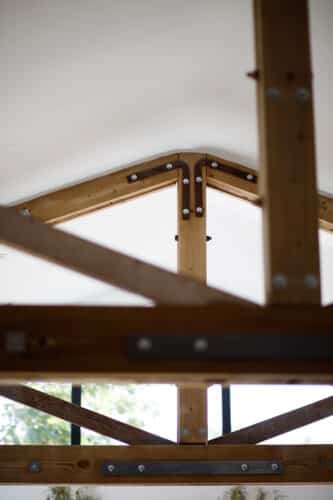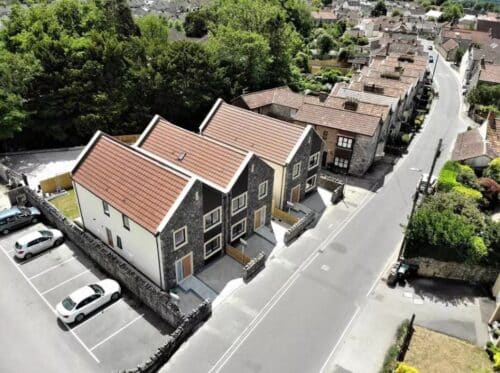A Homebuyer’s Survey or Level 3 RICS Full Building Survey is often the first step in uncovering potential issues with a property and plays a crucial role in protecting you as a buyer. These surveys help identify hidden problems and direct you to the specialist advice needed to minimise the risks involved in purchasing the property. Whether you’re considering buying an older home or a seemingly perfect new build, a survey is your first line of defence in understanding the true condition of the property.
If your surveyor discovers a serious structural defect during their inspection, it’s essential to understand what happens next. In this post, we’ll explain what a serious structural defect means, how it affects your purchase, and the steps you should take afterward.
A structural defect refers to any issue that affects the core stability or integrity of the building. These are often serious issues that can compromise the safety of the structure, leading to costly repairs or even the need for complete rebuilding. Examples include:


If you’re unsure whether a survey is worth it, it’s essential to understand the difference:
Homebuyer’s Survey (Level 2): This is the most basic survey, focusing on the general condition of the property. It will highlight major issues, but it’s not as detailed or invasive as a Level 3 survey.
Level 3 Full Building Survey: This is the most comprehensive survey and is ideal for older homes or properties with obvious issues. The surveyor will examine the structure in more depth, including the roof, foundations, and subsystems where available for inspection, often requiring access to parts of the building that aren’t readily visible.
When a serious structural defect is found, it’s more likely to happen in a Level 3 survey because of its thorough nature. However, Homebuyer’s Surveys can still detect significant red flags, especially in more obvious areas.
In Bath, Bristol, Cheltenham, Cardiff, Wiltshire and Somerset the property market is intensely competitive and without quick intervention structural problems found can easily cause sales to fall through.
The Surveyor’s Report:
If a structural defect is detected, the surveyor will include it in their report. In a Level 3 Full Building Survey, the surveyor will typically describe the defect in detail, including its potential causes, seriousness, and possible long-term effects with further investigations required where appropriate. They’ll also likely advise you on whether it’s repairable and may offer an estimate of potential costs.
In a Homebuyer’s Survey, the defect might be flagged, but there might not be as much detail. Instead, the surveyor will likely recommend further investigations or a more specialised survey.
You’ll Be Notified:
The next step after a structural defect is found is that the surveyor will reach out to you to discuss the issue. This is especially critical if the defect affects the building’s safety. The surveyor’s role is to ensure you’re aware of any potentially severe issues, so you can make an informed decision.
Seek Expert Advice:
Structural defects often require expert input. After receiving the surveyor’s report, it’s essential to consult with a structural engineer who can offer a more in-depth analysis of the problem. A structural engineer can provide you with a professional assessment of the defect’s severity, the required repairs, and their costs. In some cases, you might even need to seek advice from a specialist contractor who has experience with the type of defect found.
At WBC Group, we have a team of internal structural engineers who can assist you swiftly when a structural defect is identified. This integrated approach helps speed up the process, offering you peace of mind without unnecessary delays. Our engineers can work alongside your surveyor to provide a clear and precise evaluation of the situation, giving you accurate estimates and advice on the necessary repairs.
Evaluate the Repair Costs:
Serious structural defects can be expensive to repair, and in some cases, repairs might be beyond your budget. Depending on the defect’s nature and severity, repairs could range from a few hundred pounds to tens of thousands. In extreme cases, you might be faced with the need for significant rebuilding work, which could make the property uninhabitable during repairs.
Re-Negotiate the Purchase Price:
If you’re still interested in the property despite the structural defect, you can re-negotiate the price with the seller. Armed with the surveyor’s report and a cost estimate from a contractor and and a structural engineer’s report, you might be able to ask for a reduction in the purchase price to cover the cost of repairs. It is important to note however that serious structural defects may need to be resolved before the property is mortgageable.
Walk Away from the Deal:
If the defect is too severe or the cost of repairs is unmanageable, the best option might be to walk away from the property. If you’ve already made an offer, you can usually pull out of the purchase without penalty in England and Wales, provided that the survey results allow for it under your contractual terms.
Legal Implications:
If you decide to proceed with the purchase despite the defect, ensure that you have legal safeguards in place. You might want to add clauses to your contract to ensure the seller takes responsibility for specific repairs or guarantees that the property is structurally sound by the time you take ownership.
Ask the seller to rectify the works:
You could ask the seller to rectify the structural works before you purchase the house, this comes with some inherent risks, firstly if they use their home insurance for say a subsidence claim you would likely be lumbered with onward increased insurance premiums for the property, you need to make sure the work is guaranteed and you may wish to request a certificate of structural adequacy and that such guarantees and warrantees are passed on to you.
Whether or not you should proceed with the purchase ultimately depends on the severity of the structural defect. Some defects are easily repaired, and others might be simply cosmetic, while others can require months of work and hefty investments.
Key considerations:
A serious structural defect can be daunting, but it’s far better to uncover it during a thorough survey than to face surprises after purchase. When such a defect is discovered, you have the advantage of being informed, which allows you to make an educated decision moving forward. By consulting experts, negotiating repairs, or walking away from a deal, you can minimize the potential risks and expenses associated with buying a property that needs significant structural work.
At WBC Group, our internal structural engineers and surveyors help streamline this process, ensuring you receive quick, expert advice to guide your next steps with a single fault defect assessment. Always remember: the cost of the survey is a small price to pay for the peace of mind and protection it offers in the long run.